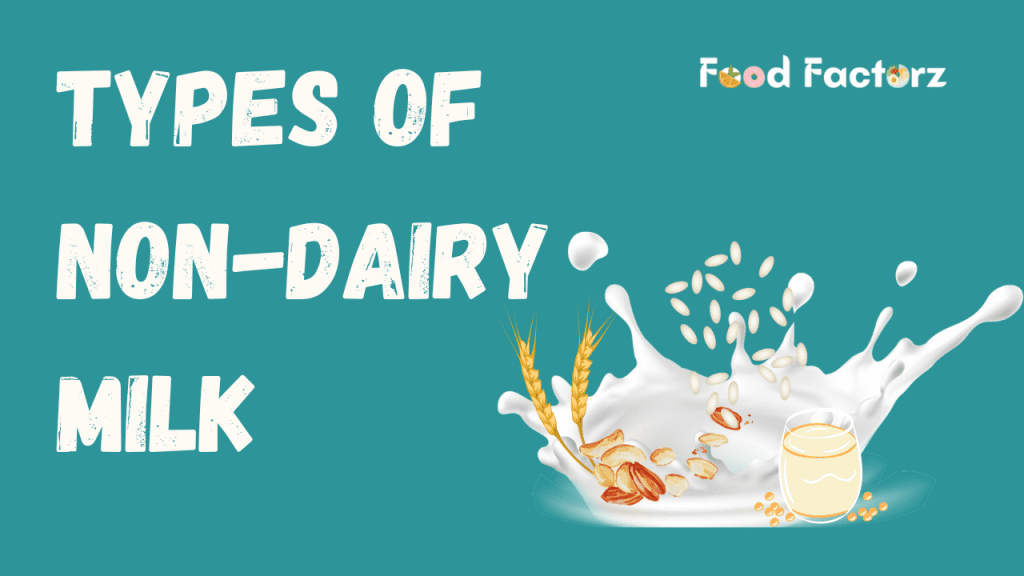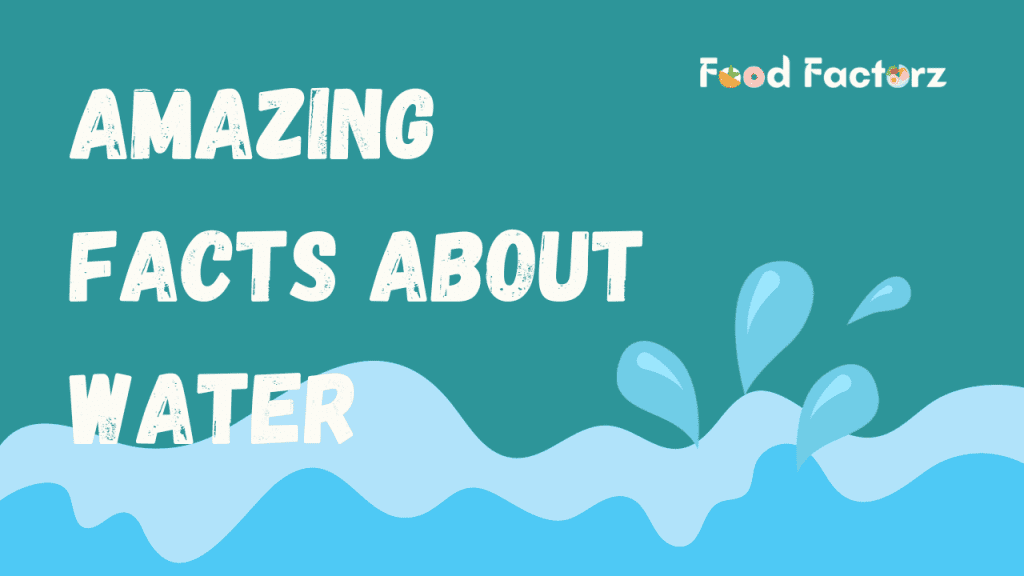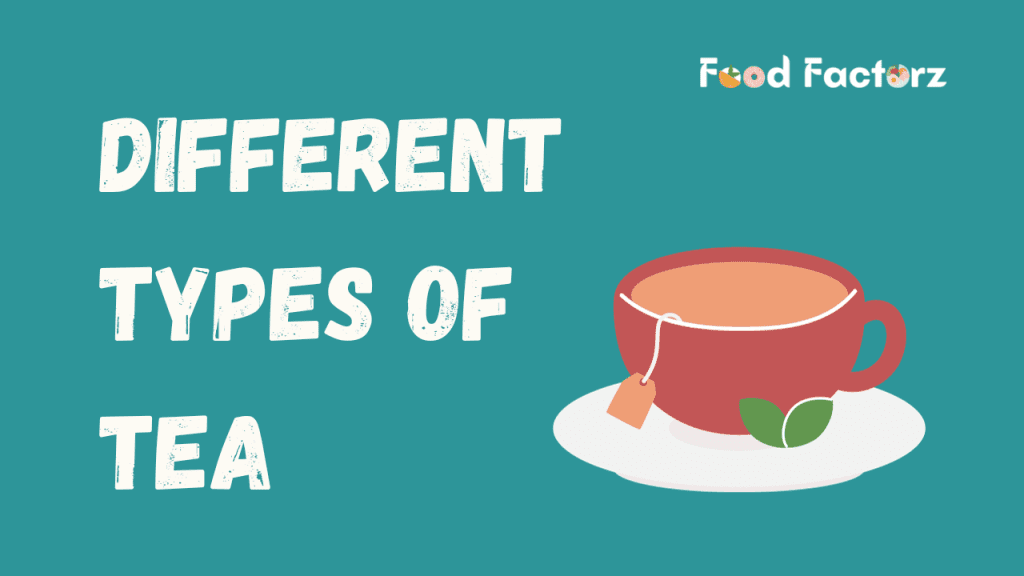10 Delectable Types of Coffee You Absolutely Must Try- A Coffee Lover’s Guide

“Coffee is a language in itself.”
Jackie Chan
Introduction
Welcome to the world of coffee, where each sip tells a story and every blend is a journey. In the words of the legendary Jackie Chan, coffee is a language. In this article, we are about to decipher the rich vocabulary of the 10 best types of coffees you absolutely need to try. From the bold and robust to the nuanced and delicate, let’s embark on a caffeinated adventure.
Exploring the 10 types of Coffee Landscape
Espresso
Under the types of coffee Espresso, the bold and concentrated powerhouse of the coffee world, is the foundation for various coffee beverages. Made by forcing hot water through finely-ground coffee beans, this small but mighty shot is the essence of pure coffee flavour.
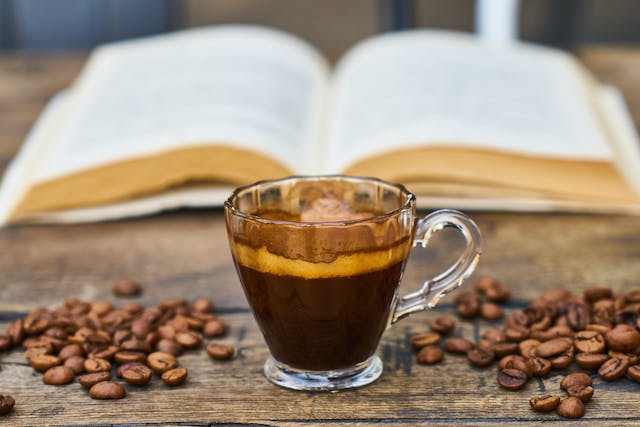
| Origin | Italy |
| Flavour | Strong, Intense |
| Preparation | Espresso machines force hot water through tightly packed, finely ground coffee, resulting in a small shot of concentrated coffee goodness. |
Fun facts
Espresso is the base for a variety of popular coffee drinks, including lattes, cappuccinos, and macchiatos.
Cappuccino
A harmonious blend of equal parts espresso, steamed milk, and frothed milk, topped with a dusting of cocoa or cinnamon. The cappuccino boasts a balanced flavour profile with the richness of espresso and the creaminess of milk.

| Origin | Italy |
| Flavour | Balanced, creamy |
| Preparation | Start with a shot of espresso, then add equal parts steamed milk and frothed milk, resulting in a layered and velvety coffee delight. |
Fun Fact
The name “cappuccino” is inspired by the Capuchin friars, whose brown robes resemble the drink’s colour.
Americano
For those who enjoy a milder taste, the Americano is a diluted espresso. Made by adding hot water to a shot of espresso, it maintains the robust flavour of espresso but with a larger, more coffee-like volume.

| Origin | United States |
| Flavour | Rich, Mild |
| Preparation | Simply dilute a shot of espresso with hot water, adjusting the strength to your preference. |
Fun Fact
The Americano is believed to have originated during World War II, when American soldiers in Italy diluted espresso to match their taste.
Latte
A latte is a coffee drink made with espresso and a generous amount of steamed milk. It has a milder flavour compared to a cappuccino, making it an excellent choice for those who prefer a creamier coffee experience.
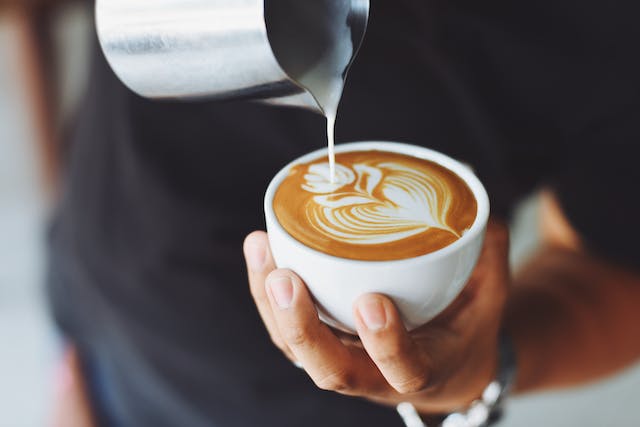
| Origin | Italy |
| Flavour | Mild, Creamy |
| Preparation | Start with a shot of espresso and add steamed milk, creating a smooth and velvety coffee beverage. |
Fun Fact
The term “latte” is derived from the Italian caffè latte, which means “milk coffee.”
Macchiato
Macchiato, meaning “stained” or “spotted” in Italian, is a shot of espresso “stained” with a small amount of frothed milk. It finds a balance between the richness of milk and the strong taste of espresso.
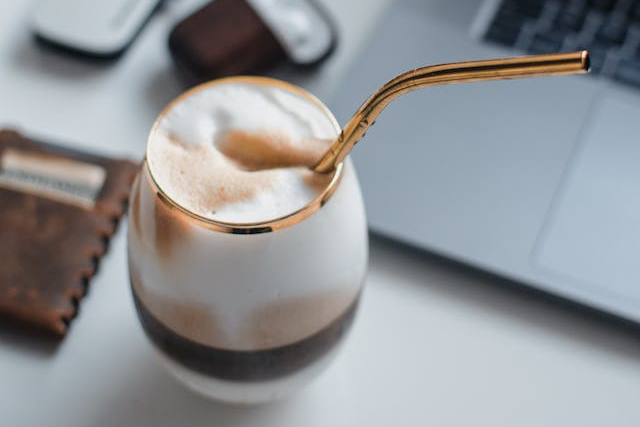
| Origin | Italy |
| Flavour | Bold, slightly creamy |
| Preparation | Add a dollop of frothed milk to a shot of espresso, creating a layered and flavorful coffee. |
Fun Fact
There are variations of macchiatos, including caramel or vanilla-flavoured options for a touch of sweetness.
Mocha
Mocha is a delightful blend of espresso, steamed milk, and chocolate, creating a rich and indulgent coffee experience. Topped with whipped cream, it’s a sweet treat for chocolate lovers.
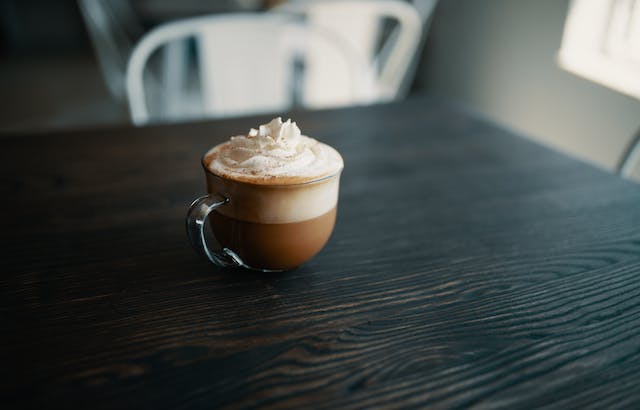
| Origin | Yemen (for the coffee bean), but the mocha coffee style originated in Italy. |
| Flavour | Chocolately, rich |
| Preparation | Combine espresso, steamed milk, and chocolate syrup, finishing with a dollop of whipped cream. |
Fun Fact
The term “mocha” is derived from the type of coffee bean used, which has a chocolate-like flavour.
Flat White
Hailing from down under, the flat white is a velvety coffee with a strong espresso base and a thin layer of microfoam. It offers a balance between the intensity of espresso and the silkiness of steamed milk.

| Origin | Australia/New Zealand |
| Flavour | Strong, silky |
| Preparation | Pour steamed milk over a shot of espresso, creating a creamy and smooth coffee with a thin layer of microfoam. |
Fun Fact
The flat white has gained popularity globally, challenging the dominance of the cappuccino and latte.
Turkish Coffee
Turkish coffee is a traditional method of brewing finely ground coffee beans with water and sugar (optional). It’s known for its strong, unfiltered taste and the unique experience of drinking the grounds at the bottom of the cup.
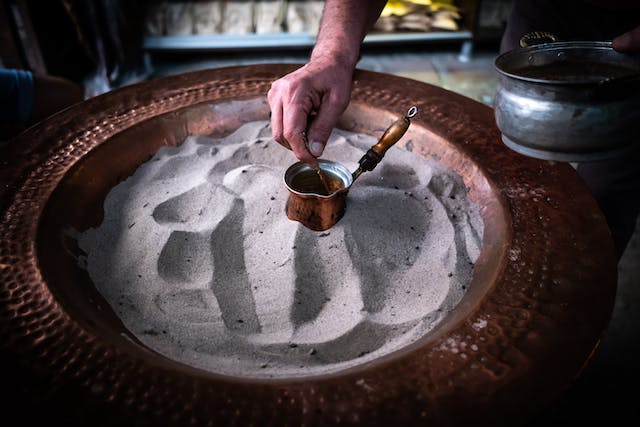
| Origin | Turkey |
| Flavour | Intense, full-bodied |
| Preparation | Brew finely ground coffee with water and sugar in a special pot called a cezve, then serve without filtering. |
Fun Fact
Turkish coffee has a long history and is often associated with cultural rituals and social gatherings.
Cold Brew
Cold brew is a method of brewing coffee with cold water over an extended period, resulting in a smooth, low-acidic coffee. It’s typically served over ice and can be customized with milk or sweeteners.

| Origin | Cold brew as a brewing method has gained popularity globally, with no specific origin. |
| Flavour | Smooth, refreshing |
| Preparation | Steep coarsely ground coffee in cold water for 12–24 hours, then strain and serve over ice. |
Fun Fact
Cold brew is favoured for its milder taste and is a perfect option for hot summer days.
Ethiopian Yirgacheffe
As a representation of single-origin coffee, Ethiopian Yirgacheffe is known for its bright acidity, floral notes, and citrusy flavours. It provides a unique and distinct taste, showcasing the diversity of coffee based on its origin.
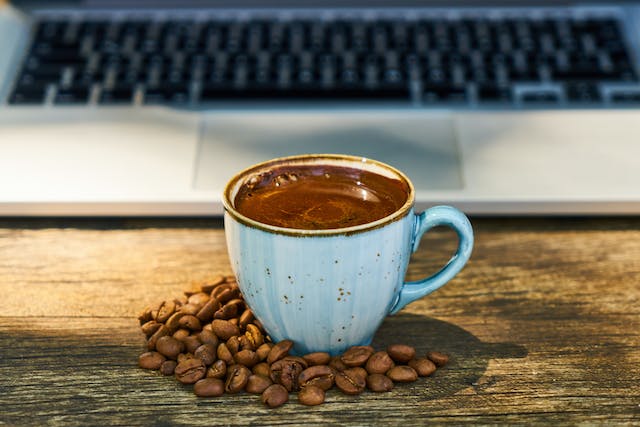
| Origin | Ethiopia (specifically the Yirgacheffe region) |
| Flavour | Bright, Floral, Citrusy |
| Preparation | Typically brewed using a pour-over or French press to highlight its nuanced flavors. |
Fun Fact
Ethiopian Yirgacheffe is considered one of the best coffees in the world and is celebrated for its complex taste profile.
10 Benefits of different types of Coffee
As we have deep dived into the coffee varieties above, let’s take a moment to appreciate the numerous benefits of our beloved beverage:
Rich in antioxidants: Coffee is a powerhouse of antioxidants that help fight inflammation and free radicals.
Boosts Mental Alertness: The caffeine in coffee enhances cognitive function and keeps you alert.
May Lower the Risk of Certain Diseases: Studies suggest that coffee consumption may be linked to a reduced risk of diseases like Parkinson’s and Alzheimer’s.
Improves Physical Performance: Caffeine increases adrenaline levels, enhancing physical performance.
Source of Essential Nutrients: Coffee contains essential nutrients like vitamins B2 (riboflavin), B3 (niacin), and manganese.
Supports Weight Management: Caffeine is a common ingredient in weight loss supplements due to its metabolism-boosting properties.
May Lower the Risk of Stroke: Some studies indicate that regular coffee consumption may be associated with a lower risk of stroke.
Fights Depression and Improves Mood: Coffee may help lower the risk of depression and reduce the risk of suicide.
Protects the Liver: Coffee may lower the risk of liver diseases, including liver cirrhosis and liver cancer.
Social and Cultural Significance: Coffee has the power to bring people together, fostering social connections and cultural rituals.
Tips for a Tastier Brew Making your coffee at home? Here are some ideas to improve your level of brewing:
Invest in Quality Beans: Start with fresh, high-quality coffee beans for a richer flavour.
Grind Just Before Brewing: Grind your coffee beans just before brewing to preserve the flavours and aromas.
Experiment with Water Temperature: The ideal brewing temperature is around 195–205°F (90–96°C) for optimal extraction.
Try Different Brewing Methods: Explore various brewing methods for different types of coffee like French press, pour-over, or AeroPress for different flavour profiles.
Add a Dash of Spice: Experiment with spices like cinnamon, nutmeg, or cardamom for a flavorful twist.
Sweeten Naturally: Use natural sweeteners like honey or maple syrup instead of refined sugar.
Conclusion
As we conclude our journey through the diverse world of types of coffee, we invite you to share your favourite coffee experiences and let us know which blend resonates with your taste buds. Remember, coffee is not just a beverage; it’s a celebration of flavours and cultures.
Your Thoughts Matter We would love to hear your thoughts and suggestions. What’s your go-to coffee? Have you tried any unique blends? Share your coffee stories in the comments below, and let’s keep the conversation brewing!



